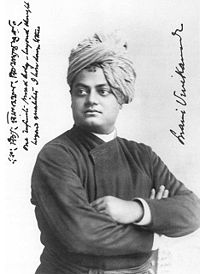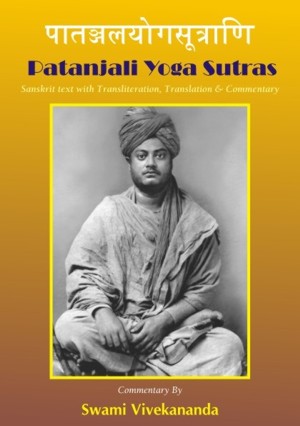20. न च तत् सालम्बनं तस्याविषयी भूतत्वात् ॥२०॥
na ca tat sālambanaṁ tasya-aviṣayī bhūtatvāt ||20||
But not its contents, that not being the object of the Samyama.
He would not know the contents of the mind by making a Samyama on the body. There would be required a twofold Samyama, first on the signs in the body, and then on the mind itself. The Yogi would then know everything that is in that mind, past, present, and future.
21. कायरूपसंयमात् तत्ग्राह्यशक्तिस्तम्भे चक्षुः प्रकाशासंप्रयोगेऽन्तर्धानम् ॥२१॥
kāya-rūpa-saṁyamāt tat-grāhyaśakti-stambhe cakṣuḥ prakāśāsaṁprayoge-'ntardhānam ||21||
By making Samyama on the form of the body the power of perceiving forms being obstructed, the power of manifestation in the eye being separated, the
Yogi’s body becomes unseen.
A Yogi standing in the midst of this room can apparently vanish. He does not really vanish, but he will not be seen by anyone. The form and the body are, as it were, separated. You must remember that this can only be done when the Yogi has attained to that power of concentration when form and the thing formed have been separated. Then he makes a Samyama on that, and the power to perceive forms is obstructed, because the power of perceiving forms comes from the junction of form and the thing formed.
22. एतने शब्दाद्यन्तधानभयिभु ॥२२॥्
etena shabdadyantardhanamuktam ||22||
By this the disappearance or concealment of words which are being spoken is also explained.
23. सोऩिभंणनुऩिभंच कभ यतत्संमभाद ्अऩयान्त ानभ, ् अणयष्टभ्योे वा ॥२३॥
sopakraman nirupakraman cha karma tatsanyamad aparantajnanam,arishtebhyo va ||23||
Karma is of two kinds, soon to be fructified, and late to be fructified. By making Samyama on that, or by the signs called Aristha, portents, the Yogis know the exact time of separation from their bodies.
When the Yogi makes a Samyama on his own Karma, upon those impressions in his mind which are now working, and those which are just waiting to work, he knows exactly by those that are waiting when his body will fall. He knows when he will die, at what hour, even at what minute. The Hindus think very much of that knowledge or consciousness of the nearness of death, because it is taught in the Gita that the thoughts at the moment of departure are great powers in determining the next life.
24. मैत्र्यदिषु बलानि ॥२३॥
maitry-adiṣu balāni ||24||
By making Samyama on friendship, etc., various strength comes.
 Swami Vivekananda
Swami Vivekananda
